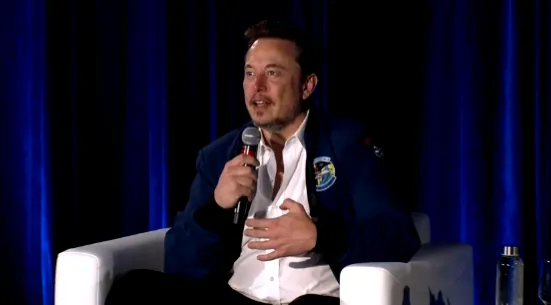I often worry that climate nihilism or climate despair may now be a greater threat to taking action than flat out climate denial is. The good news is that governments and industry are finally taking steps we need, and we’re already seeing encouraging news. (Here, have a gift link to David Wallace-Wells’s article explaining why the most dire predictions of just a few years ago are now less likely.)
The once unthinkable is now national policy: The US is actually committed to shifting away from the fossil fuel economy. Not fast enough yet, but measures like last year’s Inflation Reduction Act are nothing to sneeze at, either, providing a boost to the clean energy transition, and clean energy jobs, that really should be cause for optimism. There are some incredibly smart people working on moving that transition along, and a hell of a lot of money to be made, too. So let’s talk about enhanced geothermal energy, an energy technology that, along with solar, wind, hydro, and some nuclear, may have the capacity to save humanity’s bacon. (OK, sure, eating less meat would also help there.)
As rightwingers will happily remind you, the big drawback to wind and solar is that the wind doesn’t always blow and the sun does that “night” thing every day.
There are workarounds, especially storage batteries that can capture excess capacity to use as needed, but it would also be nice to have a reliable, always-on source of clean electricity that can be ramped up as needed to augment wind and solar, or replace ’em when they aren’t online. And that’s why geothermal is so attractive: You’re generating electricity from the Earth’s heat, which doesn’t care about the weather or the time of day.
The problem with geothermal is that until recently, you had to find places where underground heat warms up water that makes it to the surface, either as hot water or steam. Most of the really good naturally occurring geothermal sites for electricity generation are already being used, like the Geysers, in California, and some 60 other sites around the US.
The idea of enhanced geothermal is to drill down to where the rock is hot, then use hydraulic fracturing tech to create cracks in the rocks — more or less the same technique as fracking, but instead of doing it where oil is hidden down there, the fractures would be filled with water, which would be heated and steamed up to the surface through a second well, where it would heat up refrigerated gases that run turbines and generate electricity. The water is then cooled and pumped back into the well. To oversimplify a bit: Break hot rocks, add water, harvest geysers.
As the MIT Technology Review ‘splains,
A noted MIT study in 2006 estimated that with a $1 billion investment over 15 years, enhanced geothermal plants could produce 100 gigawatts of new capacity on the grid by 2050, putting it into the same league as more popular renewable sources. (By comparison, about 135 gigawatts of solar capacity and 140 gigawatts of wind have been installed across the US.)
“If we can figure out how to extract the heat from the earth in places where there’s no natural circulating geothermal system already, then we have access to a really enormous resource,” says Susan Petty, a contributor to that report and founder of Seattle-based AltaRock Energy, an early enhanced-geothermal startup.
In February, the US Department of Energy announced $74 million in grants for seven enhanced geothermal pilot projects. Another attractive thing about enhanced geothermal is that since it uses much the same technology as fracking, it could provide green jobs for people and companies currently working in oil well drilling — but without the toxic brines and oil/gas production. The drilling would avoid oil and gas deposits, which would mean you won’t have people’s water wells getting contaminated, too.
The really exciting promise of enhanced geothermal is that it could also be used to store up energy, basically using the geothermal site as a giant “battery” that could be tapped as needed when wind and solar need to be supplemented. As MIT Tech Review reports, commercial geothermal company Fervo managed a big step toward that at its plant in Nevada in January. In a series of tests, the company pumped water thousands of feet down into hot rock, then capped off both well heads and watched the pressure build. Once it was released, the water pumped out at higher pressure than normal for hours.
The results from the initial experiments […] suggest Fervo can create flexible geothermal power plants, capable of ramping electricity output up or down as needed. Potentially more important, the system can store up energy for hours or even days and deliver it back over similar periods, effectively acting as a giant and very long-lasting battery. That means the plants could shut down production when solar and wind farms are cranking, and provide a rich stream of clean electricity when those sources flag.
The tests simulated the cycle of how a well might be used to back up wind and solar, “shutting the well down for eight to 10 hours and opening it back up for 14 or more, operating it as they would on a grid with plentiful daytime solar power.” And by golly, it worked as planned.
It’s going to take time and money to start turning experiments like this into actual generating capacity, but if it can be done at a scale that makes the power commercially viable, enhanced geothermal looks very promising. Site selection and system designs will have to minimize the risk of earthquakes, for instance; the article goes into depth (ha! ha!) on several ways that can be done.
So hooray, we just might not be doomed.
[Guardian / NYT (gift link) / IPCC Report homepage / Vox / MIT Technology Review / Scientific American]
Yr Wonkette is funded entirely by reader donations. If you can, please give $5 or $10 monthly so we can help each other get through these very interesting times together.






































































